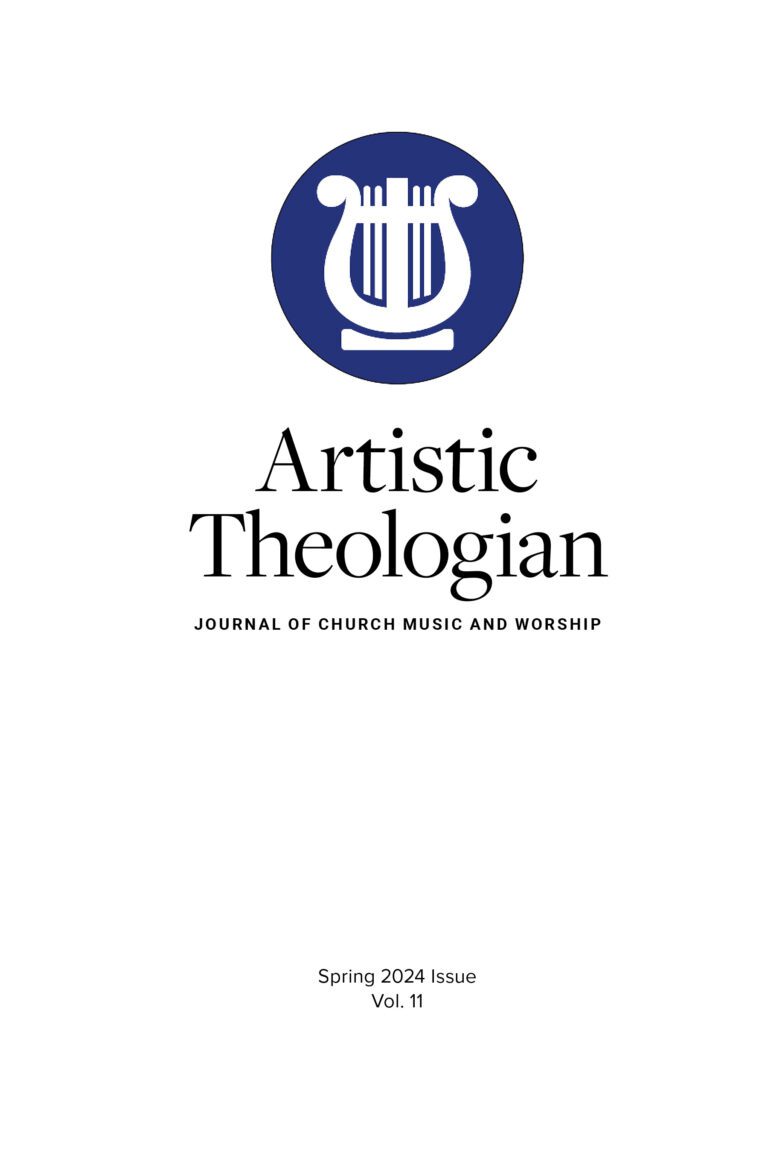
The Relationship of Doxology and Doctrine
Artistic Theologian
Volume 11, Summer 2024
Editor: Joshua A. Waggener
Music And Metaphor in Nineteenth-Century British Musicology. By Bennett Zon. Burlington, Vt: Ashgate Publishing Company, 2000. 233 PP. $24.95.
In his work Music and Metaphor in Nineteenth-Century British Musicology, Bennett Zon examines how music history was affected by language used in the critical writings and musicological discourse of the nineteenth century, including various metaphoric templates or lenses. Zon describes how templates adopted from other disciplines such as art, science, poetry, and religion provided an insight into the development of musical theories together with such ideas as the theory of evolution and the sublime.
In the opening chapter, Zon states his thesis alongside specialized words used in the literature under consideration. The use of the word “analogy” is found sporadically in writings of this period and Zon closely aligns its meaning with the word “metaphor.” Although “metaphor” does not seem to appear in British musicology of this era, the author refers to it as a “methodical template and analogy as a periodistic and poetic form of comparison” (2). His use of “metaphor” provides a catch-all heading for diverse types of musicological discourse of the period in question (4). The term “musicologist” was also not a word in use during this period. However, Zon utilizes this term to describe anyone writing about music history (e.g., music critics or philosophers).
Chapter 2 focuses on musicology through the arts, which includes the templates of painting, architecture, imitation, language and poetry, and images. Zon begins by examining William Crotch’s writings, which used the vocabulary of both literary and visual arts for music. He then discusses John Ruskin, who applied an architectural template to composition, stating that first species counterpoint is “full of dignity and stands firm, like the heavy Doric or the massive Norman” (38). Ruskin’s notion of sublimity was rigidly attached to the Gothic cathedral, which in his mind was the only space that truly represented the sublime. The view of music as an imitative art continued in the writings of authors such as William Jones and Joseph Goddard. The discussion of programmatic versus absolute music considers the work of George MacFarren and William Wallace, who take different stances on the subject.
In his third chapter, Zon tackles metaphors of religion in musicology. He examines music’s divine origin, and the notion that traditional or ritual music exemplifies God. Music evolves from its primitive form to chant, and thus Augustus Pugin understands plainchant as a metaphor for the church’s historical primacy and continued authority. Pugin overlaps chant with Gothic architecture and throughout his writings employs Gothic vocabulary and adjectives associated with the sublime (73). Other writers of this period, such as Edward Young and John Jebb, believed that music and its creation came from God. They viewed music through the lens of morality and felt that “The flaws of music are the flaws of mankind, and the history of music, from its divine origins to its corruption under man, is the history of the fall from grace” (84). R. Herbert Newton places music as the starting point for self-realization while stating that “music in the age of science is there for the purposes of reminding man of God in what is essentially a Godless age” (111).
Chapter 4 is the largest section in the book and focuses on musicology through the lens of science. Zon examines writings from authors influenced by Darwin’s theory of evolution. Many of these writers focus on the origin of music and its development. Edmund Gurney concentrated on the analysis of individual compositions seeking to prove that evolutionary theories were the only way to explain the rudiments of musical expression and aspects of music such as melody, harmony, and polyphony (129). Herbert Spencer concluded that harmony evolved from melody and that music evolved from the emotional elements of speech (122). Joseph Goddard focused on the attachment of past emotions aligning them to musical expression, while other authors such as John Cook, approached their writings with a scientific metaphor based in mathematical proportions and the science of acoustics (116). C. Hubert H. Parry highlighted the individualism of the artist asserting it was only through their upending of the status quo that evolution either continued or stagnated.
Zon’s concluding chapter opens with a discussion on primitive music as a mirror of the present, with attention to the writings of Samuel Rowbothom and Richard Wallascheck. As more books are written on the general histories of music during this era, the use of narrative overtakes the use of metaphor in most musicological discourse, thereby reducing the use of its figurative language.
Zon closes his book with an excellent bibliography of resource material. His expertise in the field of long nineteenth-century British musicology is evident in the scope of his monographs and his work as a founder of various scholarly associations, societies, and editorials focusing on the nineteenth century. This book provides an in-depth study on British musicology of the era. The interplay of analogies and metaphoric templates provides an insightful and informative view into music philosophy, musical discourse, and academic writings of the time. Each chapter supports Zon’s thesis providing meticulous evidence of how each template colored the respective author’s views and theories on music. Zon does not avoid the shortcomings of the authors or articles, and his analysis of the musicological discourse is detailed and enlightening. Due to its specific niche in musicology this book aims at an academic audience and is ideally suited to those studying musicology, history of ideas, philosophy, or aesthetics.





